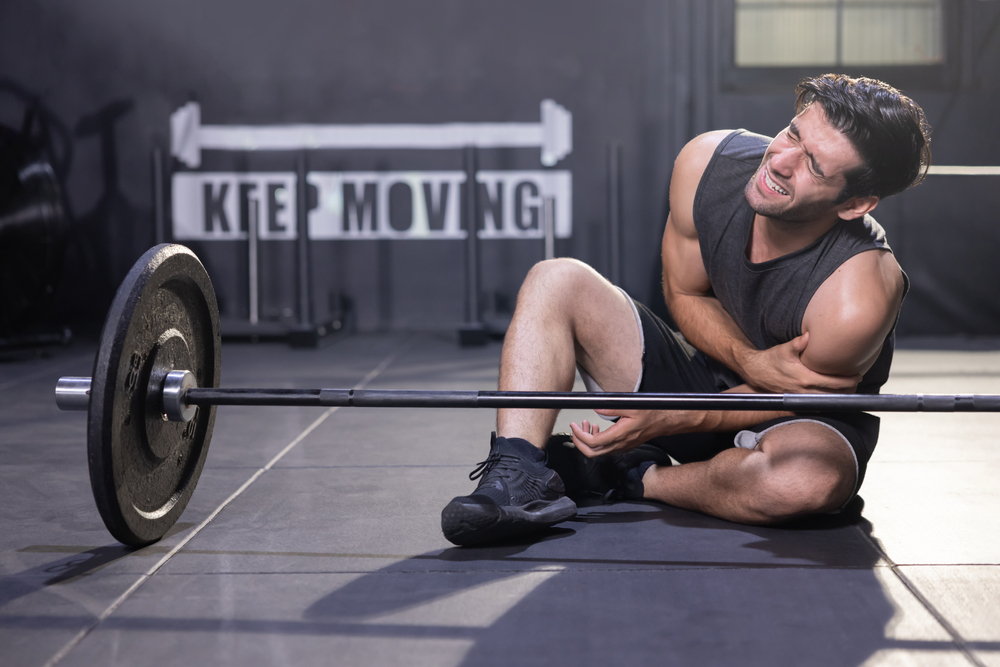1. Introduction:
Welcome to the world of fitness, where the pursuit of strength, agility, and vitality often comes with the risk of injury. In this guide, we explore the common workout injuries that can hinder your progress and offer strategies to protect your gains and continue thriving on your fitness journey.
2. The Price of Progress: The Reality of Workout Injuries
Workout injuries are an unfortunate but common aspect of the fitness journey. Whether you’re a seasoned athlete or a beginner, the risk of injury is always present, especially when pushing your limits and striving for progress.
From minor sprains to more serious fractures, workout injuries can disrupt your training routine and set you back on your path to success.
3. Understanding the Common Culprits: 7 Typical Workout Injuries
A. Sprains and Strains:
Sprains and strains occur when ligaments or muscles are stretched beyond their limits, resulting in tears or damage. These injuries are often caused by sudden movements or overexertion during exercise.
B. Tendonitis:
Tendonitis is inflammation of the tendons, typically caused by repetitive movements or overuse. It commonly affects the wrists, elbows, shoulders, knees, and ankles, causing pain and discomfort during exercise.
C. Stress Fractures:
Stress fractures are small cracks or breaks in the bones, usually caused by repetitive impact or overloading. They commonly occur in weight-bearing bones such as the shins, feet, and hips, and can sideline athletes for weeks or even months.
D. Dislocations:
Dislocations happen when the ends of the bones are forced out of their normal positions at a joint. They can occur during high-impact activities or sudden movements and often require medical attention to reset the joint.
E. Rotator Cuff Injuries:
Rotator cuff injuries are common in activities that involve repetitive arm movements or overhead motions, such as weightlifting or swimming. They can range from mild inflammation to severe tears, causing pain and limited range of motion in the shoulder.
F. ACL Tears:
ACL tears are one of the most serious knee injuries, often occurring during activities that involve sudden stops, changes in direction, or pivoting movements. They require prompt medical attention and extensive rehabilitation to recover fully.
G. Shin Splints:
Shin splints are a common overuse injury that causes pain and inflammation along the shinbone (tibia). They often occur in runners or athletes who engage in activities with repetitive impact on the legs, such as jumping or running on hard surfaces.
4. The Emotional Toll: Navigating the Mental Strain of Injuries
In addition to the physical pain and discomfort, workout injuries can also take a toll on your mental well-being. The frustration, disappointment, and fear of setbacks can be overwhelming, leading to feelings of anxiety, depression, or loss of motivation.
It’s essential to acknowledge and address the emotional impact of injuries, seeking support from friends, family, or mental health professionals when needed.
5. Proactive Measures: Guarding Your Gains
To protect your gains and minimize risk of injuries it’s crucial to adopt proactive measures and incorporate injury prevention strategies into your training routine.
A. Dynamic Warm-Up Routines:
Start your workouts with dynamic warm-up routines to increase blood flow, improve flexibility, and prepare your muscles and joints for exercise.
B. Proper Form and Technique:
Focus on maintaining proper form and technique during exercises to minimize stress on your muscles, joints, and ligaments.
C. Gradual Progression:
Progress gradually in your workouts,by slowly increasing the intensity, duration, or frequency of your exercises to allow your body to adapt and avoid overuse injuries.
D. Adequate Rest and Recovery:
Incorporate rest days into your training schedule to allow your body to recover and repair. Listen to your body and prioritize rest when you feel fatigued or sore.
E. Cross-Training:
Incorporate a variety of exercises and activities into your routine to prevent overuse injuries and promote balanced muscle development.
F. Listening to Your Body:
Pay attention to any signs of pain, discomfort, or fatigue during exercise, and adjust your workouts accordingly to avoid injury.
G. Professional Guidance:
Seek guidance from fitness professionals, coaches, or physical therapists to ensure that your training program is safe, effective, and tailored to your individual needs and goals.
6. Recovering from Setbacks: A Roadmap to Rehabilitation
In the event of a workout injury, it’s essential to take prompt action and follow a structured rehabilitation plan to facilitate recovery and prevent further damage.
7. Success Stories: Bouncing Back Stronger
Despite the challenges and setbacks, many athletes have successfully recovered from workout injuries and returned to their sport stronger and more resilient than ever.
8. Empathy and Support: The Unsung Heroes in Recovery
Empathy and support from friends, family, coaches, and teammates can play a crucial role in the recovery process, providing encouragement, motivation, and reassurance during difficult times.
9. Staying Vigilant: Long-Term Injury Prevention
Finally, it’s essential to stay vigilant and proactive in preventing workout injuries in the long term by maintaining good training habits, prioritizing injury prevention strategies, and listening to your body’s signals.
10. Final thought: Thriving Beyond the Setbacks
In conclusion, workout injuries are an unfortunate but inevitable part of the fitness journey. By understanding the common culprits, adopting proactive measures, seeking professional guidance, and prioritizing recovery and rehabilitation, you can protect your gains, overcome setbacks, and continue thriving on your path to fitness success.

